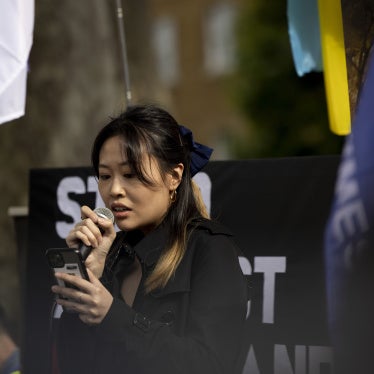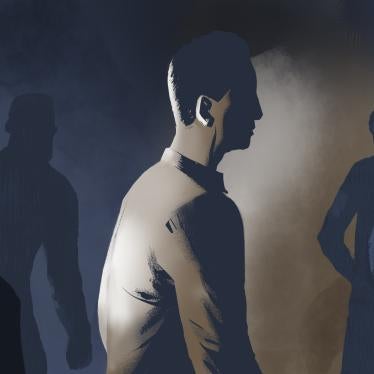(Manila) – The Philippine government should take all necessary measures to reduce the risk to civilians while conducting military operations against Muslim rebels in the southern city of Zamboanga, Human Rights Watch said today. The fighting began on September 9, 2013, when several hundred fighters of the Moro National Liberation Front moved into five coastal villages of Zamboanga City and allegedly took dozens of residents as hostages.
An undetermined number of civilians remain trapped in at least five coastal villages as a result of an armed standoff between rebel forces and the Philippine military and police. Several residents who escaped the villages told Human Rights Watch that many civilians left in the villages could not leave for fear of getting caught in the crossfire or are being prevented from leaving by Philippine security forces because they lack identification documents and thus are suspected of being rebels.
“Both sides to the fighting need to be doing more to protect civilians from harm,” said Brad Adams, Asia director. “Government forces should not be making blanket assumptions about whether individuals are rebels based on whether they have proper documents or not. Officials can check those leaving the conflict zone, but they need to ensure that civilians have safe passage and are not put at unnecessary risk.”
Residents who had escaped their coastal villages told Human Rights Watch they feared that civilians left behind would be accused of being rebels and could be subject to government attack or mistreatment in custody. Aside from demanding documentation, it is unclear how the authorities are distinguishing civilians from rebel fighters as required by international law. Police sources told Human Rights Watch that more than half of the individuals arrested since September 9 have subsequently been released.
In the village of Rio Hondo, dozens of civilians, perhaps as many as 300, are trapped in an ice plant building, having abandoned their homes for the safety of the concrete structure, one resident told Human Rights Watch. In other villages in the coastal areas of the city, residents could not leave for similar reasons.
The government responded to the rebel occupation of the coastal villages on September 9 by sending in thousands of troops, blocking off the villages, “constricting” the area, and, by September 14, “clearing” some villages of rebel elements, officials said. Between 70,000 and 84,000 residents – or about 10 percent of Zamboanga City’s population of around 810,000 – have been displaced by the fighting, according to the Department of Social Welfare and Development and local nongovernmental organizations.
The fighting has resulted in numerous fires, including one that burned down dozens of homes. As of September 14, officials said as many as 500 homes in Zamboanga City were razed. Authorities alleged that rebels started the fires, with rebel snipers targeting the fire trucks that responded to the blazes. Human Rights Watch could not confirm these allegations.
Several residents told Human Rights Watch that many of them decided to stay in the villages to safeguard their homes and belongings. Others could not leave because they did not have the money to pay operators of outrigger boats, which became the only safe way to escape the coastal villages caught up in the fighting.
Philippines military forces may also have violated the laws of war by turning the largest hospital in Zamboanga City, the Zamboanga City Medical Center, into a veritable garrison. After the hospital staff evacuated all the patients on the first day of the crisis, the military promptly moved its forces into the hospital, parking their trucks inside the hospital compound and even sending snipers to two spots on the rooftop to fire on rebels a few hundred meters way.
There have been reports that the fighting has spread to nearby Basilan island, where officials said the Moro National Liberation Front rebels have forged an alliance with the armed Abu Sayyaf militant group to stage attacks to ease the pressure on the rebels in Zamboanga. Local human rights monitors on Basilan Island have reported that the Philippine army has fired 105mm artillery shells that have struck near populated areas. Heavy artillery that has a large blast effect should not be used against enemy forces near civilian areas because of its indiscriminate effect, Human Rights Watch said.
Human Rights Watch expressed concern that all sides to the fighting abide by international humanitarian law, or the laws of war, particularly with respect to ensuring the protection of the civilian population.
The intensity of the fighting between Moro National Liberation Front forces and Philippine government security forces in Zamboanga City has risen to that of an armed conflict and the laws of war are applicable. Under the laws of war, all sides are prohibited from deliberately attacking civilians, conducting attacks that do not discriminate between civilians and combatants, or could be expected to cause disproportionate civilian harm.
Forces must take all feasible precautions to minimize harm to civilians and to avoid deploying in densely populated areas. Civilians must be allowed to safely leave combat areas. It is unlawful to take hostages or use individuals as “human shields” by deliberately using them to prevent enemy attacks. Civilian structures, including hospitals, are protected from attack, unless they are being used for military purposes. Medical personnel, transport, and facilities have special protections.
Parties to an armed conflict must treat everyone in their custody humanely. The government must promptly bring anyone apprehended before a court and either charge or release them.
“Civilians who fled their homes without proper documents are still civilians and must be treated that way,” Adams said. “Even though this is a very complicated situation, the military and the police cannot take shortcuts by jeopardizing the rights of the civilian population.”







